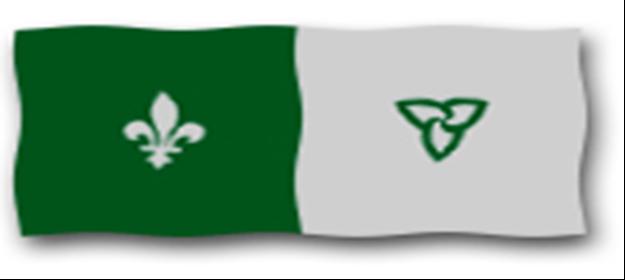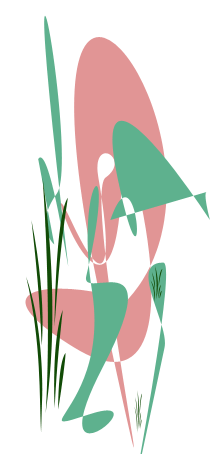
The
University of Western Ontario
Department of French
University College 138B
FR 002~002: Supplément de la grammaire
Les verbes du chapitre préliminaire
We have noticed that several verbs re-occur frequently in the chapter. These verbs are quite useful in the context of greetings and introductions. They are:
présenter, se présenter, appeler, s'appeler and aller
They are conjugated below:
| presenter (to present, to introduce) |
se presenter (to introduce oneself) |
appeler (to call, to name, to appeal) |
s'appeler (to call oneself, to be named) |
aller (to go) |
|
nous présent-ons |
je me présent-e nous nous présent-ons |
j'appell-e nous appel-ons |
je m'appell-e nous nous appel-ons |
je vais nous allons |
![]() There is much to be observed
in these five verbs. First, both présenter and appeler
are regular verbs of the -er group: the verbs with infinitives
ending in -er. The conjugation of these verbs is regular in that it is
the same for ALL regular verbs of this same -er group (notice the same
endings -e, -es,
-e, -ons, -ez, -ent).
The endings in red indicate that these endings are silent, therefore,
the je, tu, il/elle, and ils/elles forms sound exactly the same. However
alike, we must also observe that when the particle se is
added the meaning or action of the verb does change slightly. These verbs
are now reflexive verbs and their action is directed back to the subject
rather than towards another object thus restricting the meaning. You should
note that the particle se changes with each subject (me,
te, se, nous, vous, se). These are called the reflexive pronouns which
we will be examining later in the course BUT the distinction must be made
from the indirect object pronouns that we have also observed in use in
this chapter. While these two pronouns appear very similar, they
are in fact very different. Again, we will discuss these pronouns in depth
later in the course but you can observe their differing functions in the
grammar still:
There is much to be observed
in these five verbs. First, both présenter and appeler
are regular verbs of the -er group: the verbs with infinitives
ending in -er. The conjugation of these verbs is regular in that it is
the same for ALL regular verbs of this same -er group (notice the same
endings -e, -es,
-e, -ons, -ez, -ent).
The endings in red indicate that these endings are silent, therefore,
the je, tu, il/elle, and ils/elles forms sound exactly the same. However
alike, we must also observe that when the particle se is
added the meaning or action of the verb does change slightly. These verbs
are now reflexive verbs and their action is directed back to the subject
rather than towards another object thus restricting the meaning. You should
note that the particle se changes with each subject (me,
te, se, nous, vous, se). These are called the reflexive pronouns which
we will be examining later in the course BUT the distinction must be made
from the indirect object pronouns that we have also observed in use in
this chapter. While these two pronouns appear very similar, they
are in fact very different. Again, we will discuss these pronouns in depth
later in the course but you can observe their differing functions in the
grammar still:
|
Ex: • Je
me présente.
"I introduce/present myself.". (me=myself) •Tu te présentes. "You introduce/present yourself.". (te=yourself) • Il/Elle se présente. "He/She introduces/presents himself/herself.". (se=himself/herself) •Nous nous présentons. "We introduce/present ourselves.". (nous=ourselves) •Vous vous présentez. "You introduce/present yourselves.". (vous=yourselves) • Ils/Elles se présentent. "He/She introduces/presents themselves". (se=themselves) |
versus •Je te
présente Valérie. |
![]() The verb appeler
however, demonstrates a word-medial spelling change (the -l doubles -ll)
called "stem-changing" and a contracted form (m', t', s'). These
phenomena will also be examined more thoroughly later in this course.
Can you discern the rules through observation?
The verb appeler
however, demonstrates a word-medial spelling change (the -l doubles -ll)
called "stem-changing" and a contracted form (m', t', s'). These
phenomena will also be examined more thoroughly later in this course.
Can you discern the rules through observation?
| appeler (to call, to name, to appeal) |
s'appeler (to call oneself, to be named) |
|
j'appell-e nous appel-ons |
je m'appell-e nous nous appel-ons |
![]() Finally, the verb aller
is an example of a fully irregular verb. Its conjugation follows
no regular pattern and must simply be memorised. We will see several others
during the course.
Finally, the verb aller
is an example of a fully irregular verb. Its conjugation follows
no regular pattern and must simply be memorised. We will see several others
during the course.
|
aller
(to go) |
|
je vais nous allons |
